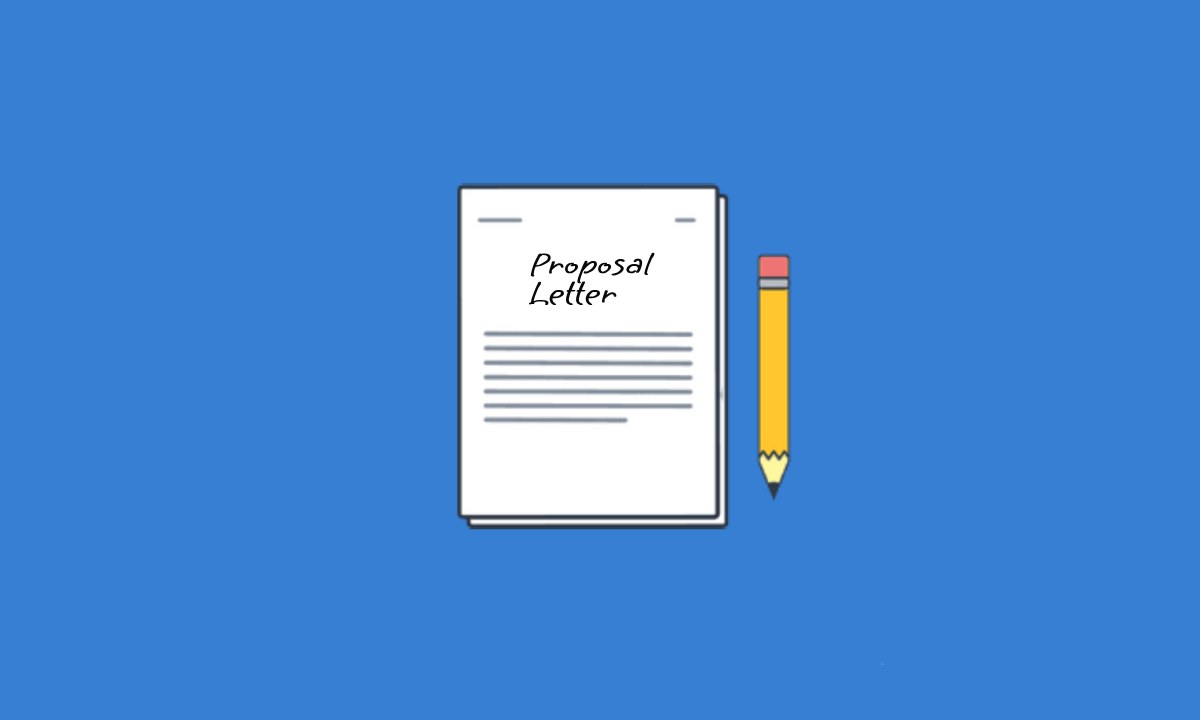What is a Concept Paper?
A concept paper is a concise document that outlines a proposed research project or study. It serves as a preliminary plan, presenting the research problem, objectives, significance, and proposed methodology. The purpose of a concept paper is to communicate the central idea of the research to advisors, committees, or funding bodies for feedback or approval before proceeding with a full proposal or detailed research plan. It helps clarify the research direction and ensures that the study aligns with academic or institutional guidelines.
Concept Paper Parts:
A concept paper in academic writing typically consists of the following key parts:
Title: A clear, concise title that reflects the focus of the research or project.
Introduction: Provides background information on the topic and highlights the significance of the research. It should introduce the problem or issue being addressed.
Problem Statement: Clearly defines the specific problem or gap in knowledge that the research seeks to address.
Objectives: Outlines the main goals or aims of the research, specifying what the study intends to accomplish.
Research Questions or Hypothesis: Presents the specific questions the research will answer or the hypothesis to be tested.
Methodology: Describes the research design, data collection methods, and analysis techniques to be used in the study.
Significance: Explains the importance of the research, highlighting its potential contribution to the field, academia, or society.
Literature Review (optional): Briefly summarizes existing studies or theories related to the research topic, demonstrating the gap the study will fill.
Budget and Timeline (optional): If applicable, includes a rough estimate of the costs and a timeline for completing the research.
These parts ensure the concept paper effectively communicates the core idea and plan for the research to relevant stakeholders.
Concept Paper Format:
The format of a concept paper can vary depending on the institution, funding body, or field of study, but it generally adheres to a standard structure. Below is a commonly used format for a concept paper in academic writing:
1. Title Page
- Project or Research Title
- Author’s Name and Affiliation
- Contact Information (if required)
2. Introduction
- Background of the study
- Brief context to the topic
- Importance or relevance of the topic
3. Problem Statement
- Clearly define the issue, problem, or gap in knowledge.
- Provide context, scope, and relevance of the problem.
4. Objectives
- State the overall aim and specific objectives of the study.
- Use bullet points for clarity (e.g., “To examine…”, “To identify…”, “To analyze…”).
5. Research Questions or Hypothesis
- List the primary research questions or hypotheses that the study will address.
6. Literature Review (Optional)
- Briefly summarize key studies related to your topic.
- Identify research gaps or areas of controversy.
7. Methodology
- Describe the research design (qualitative, quantitative, or mixed-methods).
- Specify the methods of data collection (e.g., surveys, interviews, experiments).
- Define the target population or sample and the sampling techniques.
- Outline the data analysis techniques.
8. Significance of the Study
- Explain the potential contribution to theory, practice, or policy.
- Highlight how the research will address the problem or gap.
9. Proposed Budget and Timeline (Optional)
- Present a rough estimate of the costs involved (if applicable).
- Provide a tentative timeline for completing the study.
10. References
- Include a list of academic references cited in the concept paper.
Formatting Tips:
- Length: Typically between 2-5 pages, depending on requirements.
- Font and Spacing: Use a standard font like Times New Roman, size 12, with 1-inch margins and 1.5 or double spacing.
- Headings and Subheadings: Use clear headings for each section to enhance readability.
This structured format ensures clarity and allows reviewers to quickly grasp the purpose and approach of the proposed research.
How to Write a Concept Paper?
Writing a concept paper involves presenting the core idea of your research or project in a concise and clear manner. Here’s a step-by-step guide on how to write an effective concept paper:
1. Select a Research Topic
The first step in writing a concept paper is selecting a relevant research topic. This should be a subject that aligns with your field of study or area of interest. Ensure that the topic addresses a specific problem, gap, or need in the existing literature or community. Choosing a well-defined topic will help you develop a focused and purposeful concept paper.
2. Conduct Preliminary Research
Before drafting your concept paper, conduct preliminary research on the topic to gather background information. Review existing literature to understand the scope of the issue and identify gaps that your research can fill. This initial research will help you frame the problem and justify the need for your study, ensuring that your proposal is grounded in existing knowledge.
3. Title Your Concept Paper
The title of your concept paper should clearly and succinctly reflect the focus of your research. A well-crafted title provides readers with a snapshot of the topic. It should be informative and engaging, giving a concise overview of the study while piquing the interest of stakeholders or reviewers.
4. Write the Introduction
In the introduction, provide a brief overview of the background and context of your research topic. Explain why the research is significant and relevant to the field or society. End the introduction by presenting the core issue or problem that your research will address. The goal is to establish the importance of your study and to capture the reader’s attention by highlighting the relevance of the problem.
5. Formulate the Problem Statement
The problem statement is one of the most critical sections of a concept paper. It should clearly define the specific problem, issue, or gap in knowledge that your research aims to address. Use precise language to articulate why this problem needs attention, and explain its significance in both practical and academic terms. The problem statement should be compelling and clearly establish the need for your research.
6. State the Objectives
After identifying the problem, state the main objectives of your research. These objectives should directly relate to solving or investigating the problem you’ve outlined. Break them down into specific, measurable goals, such as “to examine the impact of X” or “to analyze the relationship between Y and Z.” Well-defined objectives ensure that your research has a clear direction and purpose.
7. Develop Research Questions or Hypotheses
Next, present the research questions your study will answer, or the hypotheses you will test. These questions or hypotheses should align with your objectives and provide a framework for your research. Research questions help guide your inquiry, while hypotheses give you a starting point for testing assumptions. These elements ensure that your study has a focused approach.
8. Outline the Methodology
In the methodology section, describe the approach you will take to conduct the research. This includes the research design (whether qualitative, quantitative, or mixed methods), data collection techniques, and the population or sample you will study. Explain how you will collect and analyze the data, and justify why these methods are appropriate for answering your research questions. A clear methodology helps reviewers understand how you plan to execute the study.
9. Explain the Significance
The significance section explains why your research matters. Highlight the potential contributions your study will make to the field, theory, or practice. Discuss how the results could address the problem you’ve identified and potentially inform policy, improve practices, or advance academic knowledge. A strong explanation of significance can make your concept paper more persuasive to stakeholders and funders.
10. Include a Budget and Timeline (Optional)
If required, include a budget and timeline. The budget should offer a rough estimate of the financial resources needed to complete the research. The timeline provides an outline of the major milestones of the study and the estimated time for each phase, from data collection to final analysis. Both elements demonstrate your preparedness and planning for the research project.
11. Cite References (If Applicable)
If you’ve drawn upon any academic literature or sources to support your concept paper, include a references section. Use the appropriate citation style, such as APA, MLA, or Chicago, to format your references correctly. Citing references ensures academic integrity and supports the credibility of your concept paper by showing that your proposal is built on established research.
12. Revise and Proofread
Finally, revise and proofread your concept paper for clarity, coherence, and conciseness. Ensure that each section flows logically from one to the next and that your paper effectively communicates your research proposal. Check for grammatical, spelling, and formatting errors to ensure your paper is polished and professional.
Concept Paper Topic Ideas:
Below are some topic ideas for a concept paper across various academic fields:
1. Education
- The Impact of Remote Learning on Student Engagement and Academic Performance.
- Exploring the Effectiveness of Interactive Technology in Enhancing Classroom Learning.
- Addressing the Learning Gap: Strategies for Supporting Struggling Students Post-Pandemic.
- The Role of Emotional Intelligence in Teacher-Student Relationships and Academic Outcomes.
2. Health Sciences
- The Role of Telemedicine in Improving Healthcare Access in Rural Areas.
- Investigating the Impact of Mental Health Awareness Campaigns on College Students.
- The Effectiveness of Plant-Based Diets in Reducing Cardiovascular Disease Risk.
- Exploring the Link Between Social Media Use and Body Image Disorders in Adolescents.
3. Environmental Studies
- The Impact of Urbanization on Local Biodiversity: A Case Study of [Region].
- Renewable Energy Adoption: Challenges and Opportunities in Developing Countries.
- Reducing Plastic Waste: Exploring Effective Strategies for Sustainable Packaging.
- The Role of Green Infrastructure in Mitigating Urban Flooding.
4. Business and Economics
- The Impact of E-commerce on Small Businesses During Economic Downturns.
- Exploring the Role of Corporate Social Responsibility in Brand Loyalty.
- The Influence of Remote Work on Organizational Culture and Employee Productivity.
- Cryptocurrency: Evaluating Its Potential for Mainstream Economic Systems.
5. Social Sciences
- The Role of Social Media in Shaping Political Opinions Among Young Adults.
- Exploring the Impact of Gender Stereotypes on Career Choices in STEM Fields.
- Investigating the Effects of Income Inequality on Crime Rates in Urban Areas.
- The Influence of Cultural Identity on Immigrant Adaptation in [Country].
6. Technology
- The Role of Artificial Intelligence in Transforming the Healthcare Industry.
- The Ethical Implications of Data Privacy in an Age of Big Data.
- Blockchain Technology: Potential Applications Beyond Cryptocurrency.
- Exploring the Impact of Automation on the Global Job Market.
7. Humanities
- The Influence of Digital Media on Traditional Art Forms.
- Examining the Representation of Mental Health in Contemporary Literature.
- The Role of Language in Shaping National Identity and Cultural Heritage.
- Exploring the Impact of Historical Trauma on Collective Memory in [Country/Region].
Concept Paper Example:
Below is a brief example of a concept paper based on a hypothetical research topic:
Title:
The Role of Urban Gardens in Promoting Food Security and Community Well-being
Introduction:
Urban gardens have emerged as a popular solution to enhance food security and foster community well-being in cities around the world. With urbanization on the rise and many communities facing limited access to fresh, affordable produce, urban gardening initiatives offer a sustainable solution. These gardens not only provide food but also create green spaces that improve mental health, build social connections, and promote environmental awareness. Despite the potential benefits, there is a need for further research to quantify the direct impact of urban gardens on local food security and community well-being. This study aims to examine how urban gardens contribute to food security in low-income neighborhoods and assess their broader social and environmental impacts.
Problem Statement:
In many urban areas, particularly in low-income neighborhoods, residents face limited access to fresh, healthy food, leading to food insecurity and related health issues. Urban gardens have been proposed as a community-based solution, but there is insufficient data on their effectiveness in alleviating food insecurity and their overall impact on community well-being. This study seeks to address this gap by examining the specific contributions of urban gardens to improving food access, mental health, and community resilience in low-income urban areas.
Objectives:
The primary objective of this research is to evaluate the role of urban gardens in promoting food security and enhancing the well-being of urban communities. Specifically, the study will:
- Assess how urban gardens increase access to fresh food in low-income areas.
- Analyze the impact of urban gardens on community cohesion and mental health.
- Explore the environmental benefits of urban gardens, such as reducing urban heat islands and increasing biodiversity.
Research Questions:
How do urban gardens improve food security in low-income urban neighborhoods?
What is the impact of participation in urban gardening on the mental health and well-being of community members?
What environmental benefits do urban gardens provide to urban ecosystems?
Methodology:
This study will use a mixed-methods approach to explore the role of urban gardens. The quantitative aspect will involve surveys and data collection from households participating in urban garden initiatives in three low-income neighborhoods. The data will measure changes in food security, mental health, and community engagement. In addition, qualitative interviews will be conducted with garden organizers and participants to gather in-depth perspectives on the social and environmental impacts of these gardens. Satellite imagery and environmental assessments will also be used to analyze changes in green space and biodiversity associated with urban gardening projects.
Significance:
This research will contribute to the understanding of how urban gardening can serve as a practical tool for improving food security and community well-being in urban areas. The findings could inform policy decisions on urban planning, food systems, and public health, particularly in cities facing issues of food deserts and environmental degradation. By providing evidence on the benefits of urban gardens, this study will support the expansion of urban gardening initiatives as a sustainable, community-driven solution to urban challenges.
Budget and Timeline (Optional):
The proposed research will be conducted over a period of 12 months, with an estimated budget of $10,000. This budget includes costs for survey administration, travel to garden sites, and environmental assessment tools. Major milestones include the completion of data collection within the first 6 months and the publication of findings by the end of the project timeline.



